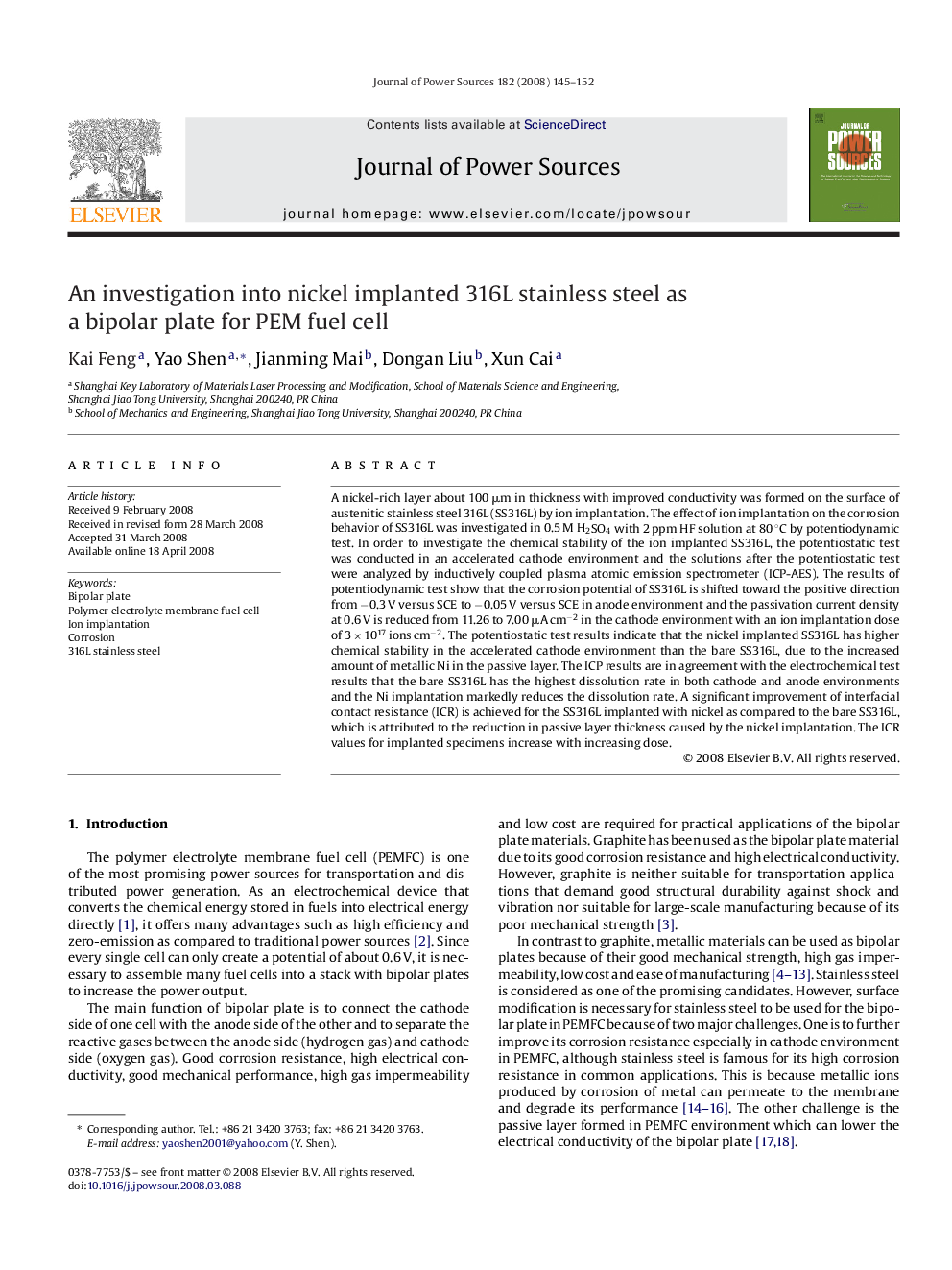| Article ID | Journal | Published Year | Pages | File Type |
|---|---|---|---|---|
| 1290280 | Journal of Power Sources | 2008 | 8 Pages |
A nickel-rich layer about 100 μm in thickness with improved conductivity was formed on the surface of austenitic stainless steel 316L (SS316L) by ion implantation. The effect of ion implantation on the corrosion behavior of SS316L was investigated in 0.5 M H2SO4 with 2 ppm HF solution at 80 °C by potentiodynamic test. In order to investigate the chemical stability of the ion implanted SS316L, the potentiostatic test was conducted in an accelerated cathode environment and the solutions after the potentiostatic test were analyzed by inductively coupled plasma atomic emission spectrometer (ICP-AES). The results of potentiodynamic test show that the corrosion potential of SS316L is shifted toward the positive direction from −0.3 V versus SCE to −0.05 V versus SCE in anode environment and the passivation current density at 0.6 V is reduced from 11.26 to 7.00 μA cm−2 in the cathode environment with an ion implantation dose of 3 × 1017 ions cm−2. The potentiostatic test results indicate that the nickel implanted SS316L has higher chemical stability in the accelerated cathode environment than the bare SS316L, due to the increased amount of metallic Ni in the passive layer. The ICP results are in agreement with the electrochemical test results that the bare SS316L has the highest dissolution rate in both cathode and anode environments and the Ni implantation markedly reduces the dissolution rate. A significant improvement of interfacial contact resistance (ICR) is achieved for the SS316L implanted with nickel as compared to the bare SS316L, which is attributed to the reduction in passive layer thickness caused by the nickel implantation. The ICR values for implanted specimens increase with increasing dose.
